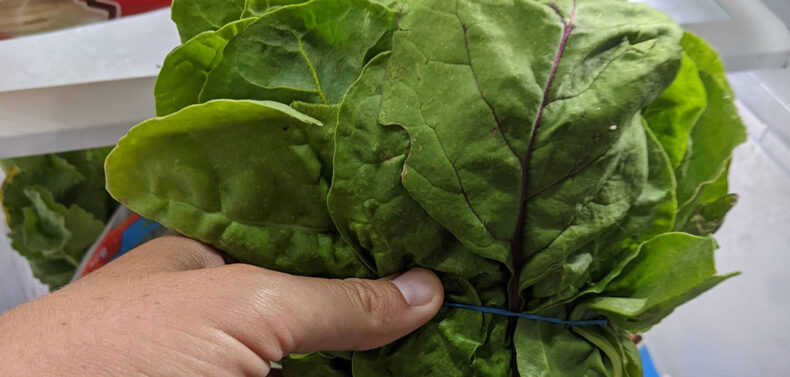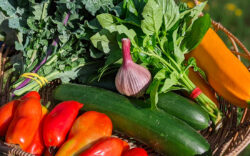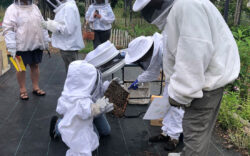Due to life, sometimes that crispy, speckled lettuce head transforms from an aspirational mid-week dinner star to a sad, soggy loser sitting in the compost bin. Do you know where it went wrong? Was the lettuce cooled properly during harvest? Was it stored in the fridge to maximize freshness? Whether you’re harvesting from your own garden or buying from a farmer’s market, here are a few tips to get that produce on your plate instead of thrown out.
Ditch the Heat: Harvest in the morning and then dunk tender produce in a cold water bath to protect against rapid rotting. Field heat absorbed by the plant will continue degrading the produce (which continues losing water through respiration) until arrested. This is especially true for leafy greens. Sticking whole heads of lettuce in a cooler isn’t as effective as plunging the whole thing into an ice bath, before shaking off excess water and storing. This also works great for thin-skinned summer squashes, cucumbers and root vegetables as a good way to clean and prep for storage. Ice baths aren’t best for veggies like tomatoes, where a few wet drips could lead to mold. Peppers, eggplants, beans, okra and thick-skinned squashes, normally harvested during the summer, are the least troubled by field heat and can cool down slowly in a fridge.
Use Your Crisper: If you have a decent fridge, the crisper is a good way to keep your veggies fresher. Basically, it’s like sticking them in a tupperware container without having to buy a huge tupperware container. I keep our fridge at 38 degrees, but greens must go in the crisper, or they turn into a saggy, limp mess within days. The crisper helps control the humidity, which needs to be pretty high for edible leaves to remain appetizing.
If your crisper isn’t an option, try wrapping your greens in a paper towel or paper bag. This helps absorb drips from the leaves, but it keeps the moisture close to the humidity-loving plant. The close-by moisture keeps its cell-walls strong for a continued crisp crunch. Paper towels placed at the bottom of the plastic, lidded container is another alternative.
Eat Within a Week: Whether your tomatoes or a nearby farmer’s, make a plan to eat your produce within a week of harvest. Farmers pick veggie varieties based on insect and disease resistance, climate tolerance, price, appearance and (of course) taste. These characteristics can sacrifice shelf stability. Shelf stability and shipping rules most of what chain grocery stores provide and large commercial farms grow. Local farmers sell chanterelle mushrooms and mulberries, but their poor storage and easily bruised fruits make them an inferior choice for commercial agriculture. If you’re buying a product not normally seen on grocery store shelves, that’s a good hint to eat it quickly! But even when the food is in a familiar shape, that local bell pepper wasn’t bred to ripen in transit and then sit on a counter for two weeks. It was bred for local conditions and chosen because it’s delicious when fresh.
Ethylene Production: Some plants produce ethylene—a naturally occurring gas that can speed ripening and rotting—and some produce is particularly sensitive to ethylene. The trick is to not store the two together. Many common fruits, like apples, pears and bananas, produce a lot of ethylene and can cause veggies like broccoli, cucumbers and watermelons to degrade faster if stored together. You’ll notice yellow spots, bitterness or general signs of rotting. Though some vegetables also produce ethylene, separating veggies and fruit is a good rule of thumb.
Ask an Expert: If you’re still struggling to store and put your produce to use, ask a local farmer or the UGA Extension Office for tips. There are many other ways to freeze, dry, can or pickle extra produce so that it doesn’t go to waste and can be enjoyed in the future. The internet can provide a good jumping-off point for brainstorming, but be sure to check the validity of online sources before taking their advice.
Like what you just read? Support Flagpole by making a donation today. Every dollar you give helps fund our ongoing mission to provide Athens with quality, independent journalism.










